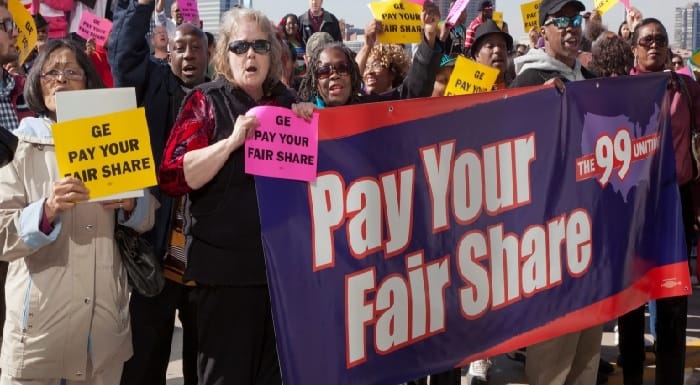Is there even a point in having public sector unions? What exactly do those unions serve to do? Government jobs are among the highest paid (relative to their private sector equivalents), offer fringe benefits, and are extremely difficult to be fired from.
Even a quasi-socialist President, Franklin Delano Roosevelt, cautioned the public against public sector unions, making the point that they can’t correct the power imbalances between an employer and worker that private unions aim to. “It is impossible to bargain collectively with the government”, he said, pointing out the obvious. FDR also argued that public sector union strikes, calling them an “unthinkable and intolerable” strike against the American taxpayer.
A recent Supreme Court ruling dealt a heavy blow to public sector unions, particularly their ability to force people to pay dues, even if they don’t personally want to join the union. Last Wednesday the SCOTUS ruled that public sector unions cannot force some 5 million government workers to pay mandatory fees. (RELATED: The Supreme Court Just Handed Down Its Big Decision On Mandatory Union Dues).
In many States, government workers who don’t join their union still have to pay a large percentage of the dues regardless. The “logic” behind this is that it prevents people from free-riding on the supposed benefits the union brings to all workers.
There are no clear benefits to public sector unions, hence why this ruling was so damning to the Left. When people aren’t forced to join a union, they’re quite eager to leave, which wouldn’t be the case if they were essential. It’s no surprise that the rate of union membership is five times higher in government work, where membership is forced, than in the private sector.
According to the Washington Free Beacon, “The largest public-sector unions in the country may lose up to 400,000 fee payers after the Supreme Court declared mandatory payments unconstitutional. The decision could cut into the coffers of the Democratic Party.”
Todd Lyon, a labor and employment attorney, said that “The ruling will decrease the funds available for unions, so we’ll see a rash of layoffs within the unions themselves. That’s going to lead to a decrease in the advocacy,” Lyon said. “There’s going to be a decrease in the political activity.” The four biggest unions, AFSCME, SEIU, AFT, and the NEA, have spent over a collective $1 billion on political activities since 2012.
Those political donations (nearly all of which went to Democrats) played an influential role in the SCOTUS ruling against compulsory dues, as they force some workers to endorse political speech that they disagree with. Ironically, this comes at a time when the Republican National Committee is out-fundraising the Democratic National Committee by a ratio of more than 2:1. It seems that these 400,000 dues were dues that Democrats truly couldn’t afford to lose. (RELATED: RNC Smashes $200 Million Fundraising Record in May – Dems Left in Dust).
And given that there are over 7 million public sector union employees, I think that the true number who ditch their unions will be much greater. If government employees were unionized at the same rate as public sector employees (6.5 percent), there would only be roughly 1.5 million public sector union members left.
Union interference in the private, and public, sector economy appears to be disappearing, which is good news for millions of American workers across the country. For too long, unions have been a burden on both employers and workers, and this recent Supreme Court ruling is yet another blow to the left.
